Lectures on bioinformatics: from statistics to genetic constructions
To immerse yourself in a relatively new scientific field, there is a huge number of various activities and projects. In recent years, their number and formats have expanded considerably: these are open lectures and entire scientific festivals, online courses and online programs, summer internships and schools, informal lectures in bars, open-end projects and so on.
For five years, the Institute of Bioinformatics has been gathering bioinformatics scientists and students from all over the country and, during a week-long intensive out-of-town study at the summer school, directs biologists, physicians, computer scientists and mathematicians towards bioinformatics, which is still a very dynamically developing field. Since 2013, we have been recording lectures on video and collecting a selection of useful materials for those who are not participating in events, but would like to develop in this area.
The school program is designed to unite the world of biology and programming and to stimulate not only the development of professional development, but also interdisciplinary communication.
')

We continue to share the archive of summer school lecture videos. Lectures that can be watched without additional training are marked with "*". Viewing other lectures requires knowledge in biology and programming. Under the cut description of the content of lectures, links to slides and videos.
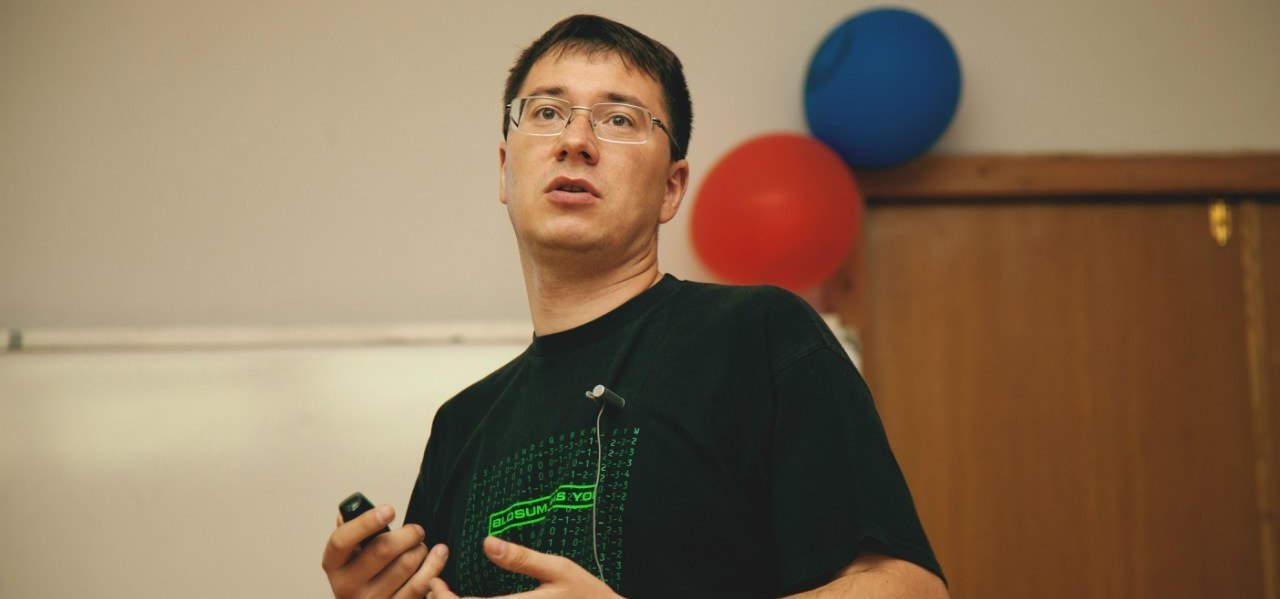
Statistical analysis of biomedical data (Mikhail Pyatnitsky, Orekhovich Research Institute of Biomedical Chemistry)
Video | Slides
The lecture is devoted to practical aspects of statistical analysis of '-mix' data. In particular, methods of exploratory analysis, pattern recognition, cluster analysis are described.
How to work with data and not feel helpless? (Nikita Alekseev, George Washington University)
Video | Slides
On the one hand, natural sciences provide huge amounts of data and ask a variety of questions about this data. On the other hand, statistics has many methods for solving such issues. Such abundance naturally brings with it difficulties - how to choose a method that is suitable for solving your problem, how to take into account all the nuances and not get lost in all this. There is no universal recipe. The lecture discusses various approaches to this problem.
How to ask a friend a question correctly statistics (Nikita Alekseev, postdoc, George Washington University)
Video | Slides
The lecture will be useful to anyone who faces problems with statistical data processing. What solutions are possible for them, what difficulties arise, and what to ask the statistics with which they managed to start cooperating in order to get the maximum benefit for their project.
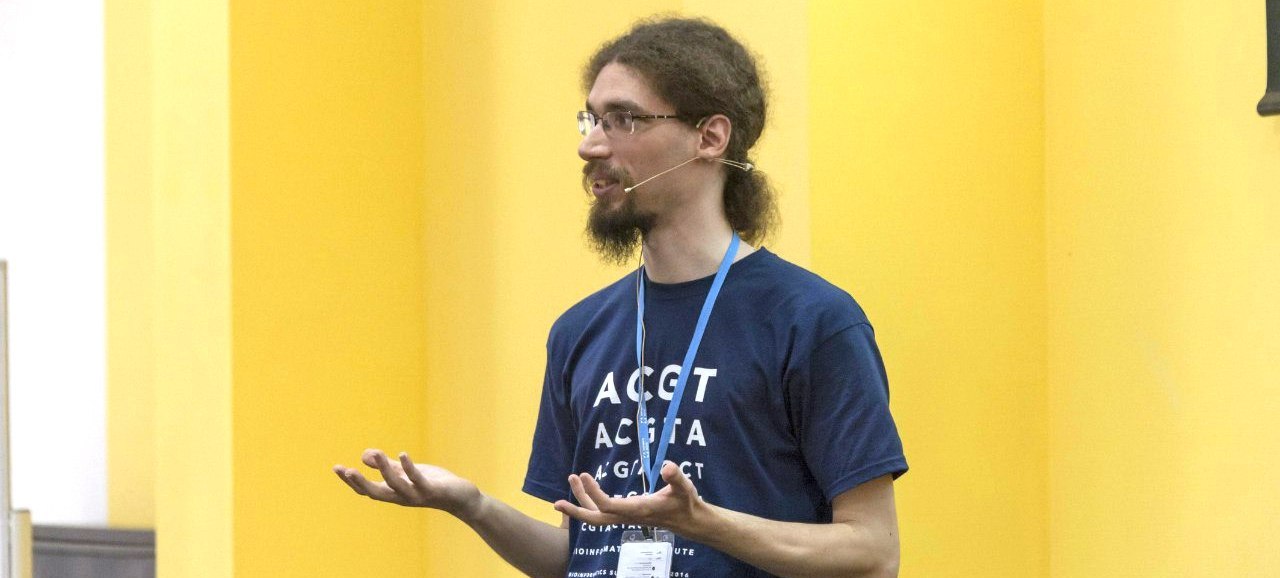
Analysis of immune receptor repertoires (Vadim Nazarov, Higher School of Economics, Institute of Bioorganic Chemistry, RAS)
Video | Slides
The use of NGS technology in immunology has allowed for a very deep sequencing of cell receptor repertoires. But unfortunately, one cannot simply look at the data obtained and get insights - it is necessary to develop various methods for analyzing repertoires. About what methods were developed, how adequate they are, where this world is heading, and where you can put yourself in it.
Immunoinformatics: an algorithmic approach to solving applied problems of immunology (Yana Safonova, Center for Algorithmic Biotechnology, St. Petersburg State University)
Video | Slides
Analysis of the adaptive immune system is an important step in the development of drugs, evaluating the effectiveness of treatment, and studying various diseases. Modern NGS technologies allowed for deep scanning of repertoires of antibodies and T-cell receptors, which contributed to the development of a new field of bioinformatics: immunoinformatics.
Immunoinformatics solves problems that have applications in various immunological directions: monitoring the development of the immune response, analyzing the evolutionary development of repertoires, understanding the diversity of the adaptive immune system. The lecture discusses the challenges of modern immuno-informatics and discusses the prospects for its development.
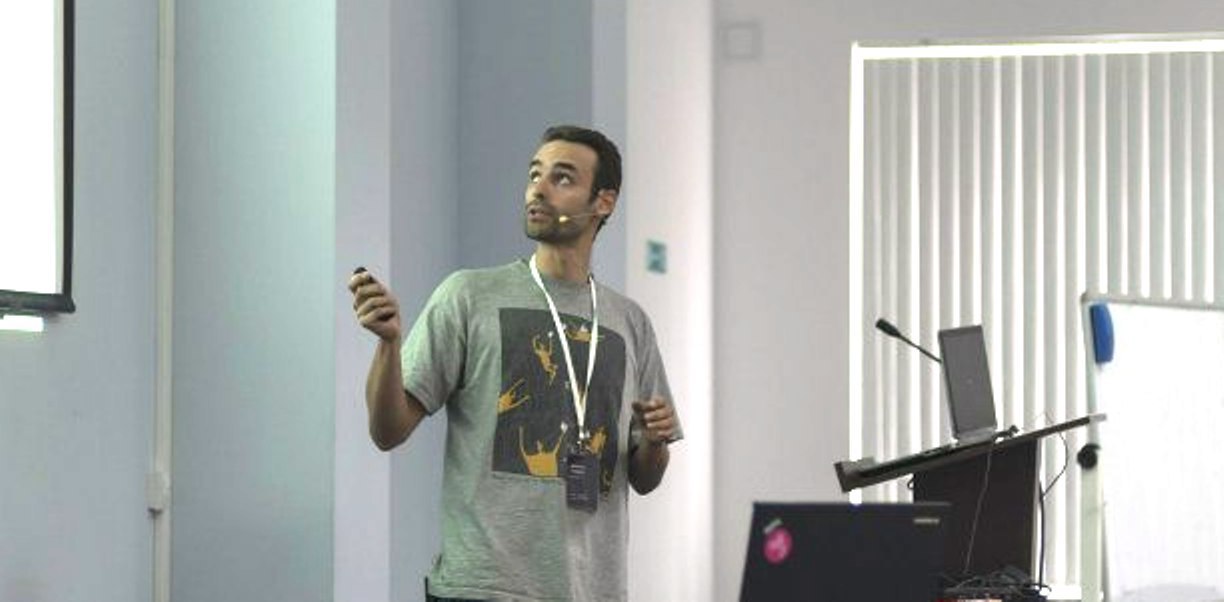
Molecular barcoding, analysis of repertoires of T-cell receptors and antibodies (Dmitry Chudakov, Head of the Laboratory of Adaptive Immunity Genomics at the Institute of Bioorganic Chemistry, Russian Academy of Sciences, Head of the Adaptive Immunity Group at CEITEC MU, Masaryk University)
Video | Slides
High-throughput sequencing of targeted fragments of interest (targeted resequencing) potentially allows for in-depth analysis that reveals the presence of rare subvariants of sequences in a sample, as well as giving a complete picture of the structure of sequence diversity in a sample.
However, “bottlenecks” at the stages of obtaining and preparing samples for massive sequencing, quantitative distortions associated with the stochastic nature of PCR, unequal amplification and sequencing efficiency of different sequences, as well as the accumulation of PCR errors and proper sequencing, significantly limit the possibilities of such analysis.
Unique molecular barcoding (unique molecular bacterial, unique molecular identifiers, UMI) makes it possible to radically improve the quality of sequencing, including extended, to effectively correct accumulated errors without losing the real variety of options, to eliminate quantitative distortions, and also to adjust samples for comparative analysis almost perfectly.
The lecture discusses how molecular barcoding approaches work with examples from personal experience with repertoires of immune cell receptors — T-cell receptors and antibodies.
Introduction to systems biology (Ilya Serebriysky, Fox Chase Cancer Center, USA)
Video | Slides
The lecture gives a general idea of the system properties of biological objects. Brief description of the main components of system biology. Interactomics, building models. Some advances in systems biology (selectively, mainly in the field of oncology) and related public resources (TCGA / cBioPortal, CCLE)
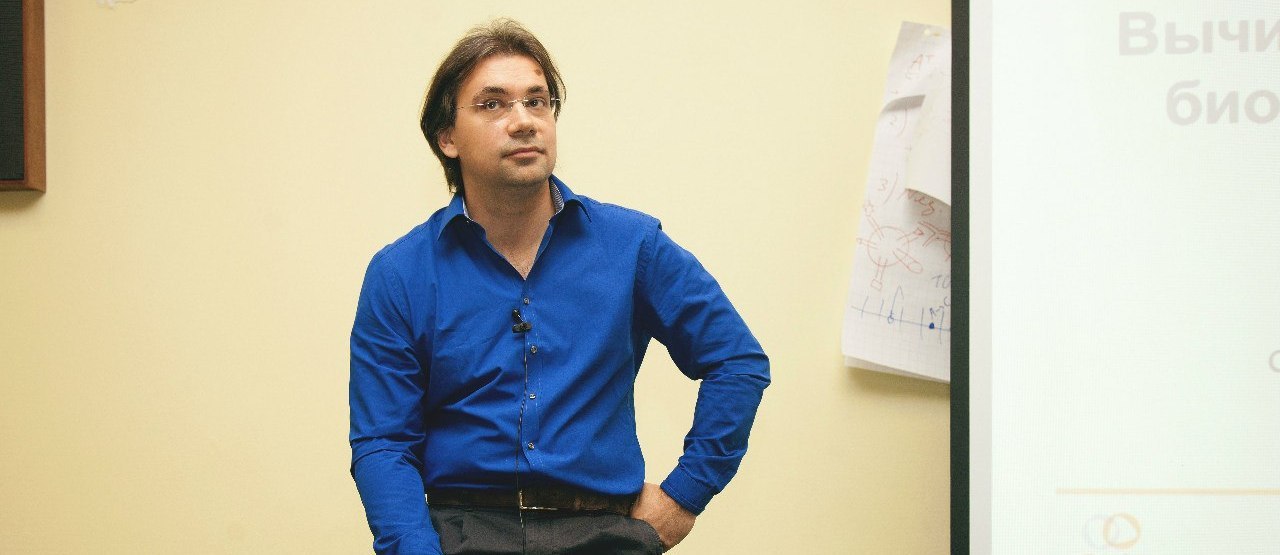
Computational Systems Biology for the Study and Treatment of Cancer (Andrei Zinoviev, Institut Curie)
Video | Slides
Computational systems biology of cancer is the application of general systems biology approaches related to the system-wide collection of genome-wide data and their mathematical modeling to study carcinogenesis, prediction and development of new cancer treatment methods. The data approach is associated with a number of features such as taking into account the rapid evolution of a biological system under conditions of genomic and epigenomic instability, interactions with cells of the normal stroma and the effects of various intercellular factors, and the diversity and quality of clinical material. The lecture briefly describes several characteristic approaches to the analysis and modeling of data in cancer biology. In particular, the principles of formalization and use in modeling knowledge about the biochemistry of cancer ( Atlas of Signal Networks in Cancer ), approaches to deconvolution of genome-wide molecular profiles in cancer, building discrete mathematical models to predict the evolution of a cancerous tumor.
The problem of reproducible results in systems and not only biology (Ilya Serebriysky, Fox Chase Cancer Center, USA)
Video | Slides
The problem of reproducible results is a key issue for modern biology, especially for systems biology. The lecture is devoted to a review of the current state of affairs, the main problems of reproducibility, their causes. Responsibility of organizations, scientific journals, researchers. Features of the problem in systems biology. The main directions of solving the problem of reproducibility.
“Motives” - patterns in genomic sequences (Ivan Kulakovsky, IMB RAS; IOGen RAS)
Video | Slides
From the perspective of molecular biology, the lecture discusses the regulation of gene transcription activity in higher eukaryotes and the role of regulatory proteins-transcription factors. From the point of view of bioinformatics, the lecturer tells how a computer representation of motifs — characteristic patterns in genomic texts — helps to recognize regulatory signals recognized by transcription factors in DNA. From the point of view of computer science, he considers the problem of constructing a model of a 'motive' as the task of finding local similarities for a set of sequences.
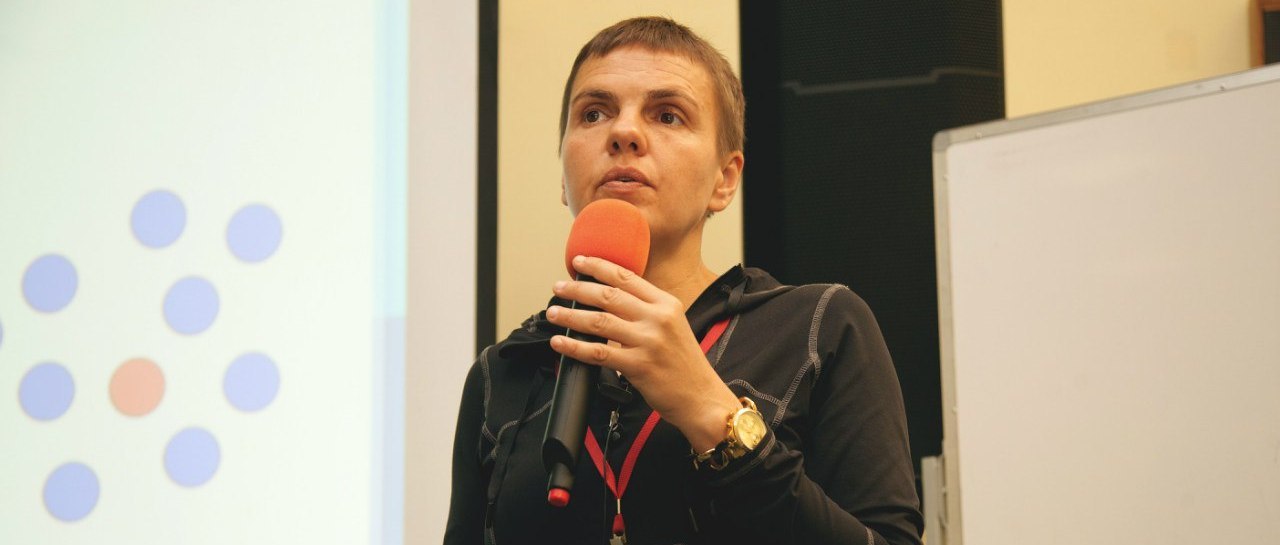
Annotation of promoter sequences (Tatiana Tatarinova, University of Southern California)
Video | Slides
The lecture addresses issues of regularity and properties of promoter sequences. Motives and methylation of promoters. Algorithms for prediction and analysis of promoter sequences. Application in biotechnology.
Prediction of Origin Based on Admixture GPS and Readmix Algorithms (Tatiana Tatarinova, University of Southern California)
Video | Slides
The lecture is devoted to genotyping and selection of informative positions on the genome, a review of modern technologies, the prediction of the bio-geographical origin of humans and other organisms according to genome analysis. As well as analyzing and comparing existing algorithms for biogeography.
Algorithms in bioinformatics (Anton Banevich, Center for Algorithmic Biotechnology, St. Petersburg State University)
Video | Slides
An introductory lecture on algorithms in bioinformatics, which discusses the main approaches and examples of their use.
Relationship between the brain and Deep Learning (Dmitry Fishman, Quretec, University of Tartu, Estonia)
Video | Slides
The lecture consists of four parts: in the first one, the ways of processing different signals from the outside world by the brain and the formation of decision making based on the received signals are considered. The second is the evolution of machine learning methods that led to the emergence of deep learning technology, which revolutionized many areas of science. The third part deals with the similarities and differences between the basic principles of Deep Learning. Finally, the lecturer gives several examples of successful use of Deep Learning in bioinformatics, and what can be achieved in the field of medical imaging using Deep Neural Networks.
This lecture was created by representatives of the Computing Neuroscience Research Group of the University of Tartu . In particular, the idea and the slides belong to Raul Vincente and Ilya Kuzovkin. Original presentation in English .

Perspectives of artificial modification of human genotypes (Alexey Kondrashov, MGU, MSU)
Video
No laws of nature prohibit the synthesis of long DNA molecules with a given sequence. What will be the phenotype of a person whose genotype does not carry young derived alleles? It depends on how common sign and narrowing epistasis. The lecture examines approaches to the study of this issue.
Bioinformatics in the synthesis of genetic constructs (Pavel Yakovlev, BIOCAD)
Video | Slides
The development of methods in in silico molecular design allows you to build any protein constructs with desired properties. The resulting amino acid sequences are likely to form proteins with the desired functionality. But there is a new challenge: to build a cell line that would synthesize such proteins. The lecture deals with the questions that arise when solving this problem: why can't we just take any reverse transcript, how to assemble the required gene, how to insert it into a vector, and, of course, where does bioinformatics come from?

Review of modern genomic measurements of individual cells (Peter Kharchenko, Harvard University)
Video | Slides
The study of complex tissues and the classification of cell types have traditionally been based on morphological and cytological properties. Several types of experimental technology now allow us to study the genomic characteristics of individual cells and simultaneously measure hundreds or thousands of individual cells. The lecture gives an overview of such technologies and bioinformatic methods that are used to classify cell types, states and genetic lines from similar data.
The use of omix data in the study of human evolution (Filip Haytovich, Shanghai Institutes for Biological Sciences, SkolTech)
Video | Slides
The concentration of metabolites and lipids can be used to assess the physiological state of the tissues. The lecture presents several comprehensive studies of the concentration of metabolites and lipids in human and animal tissues, which provide new knowledge of the molecular mechanisms underlying the physiological features unique to humans.
In 2016, the summer school on bioinformatics was supported by the companies JetBrains , RVC , BIOCAD , EPAM Systems , Parseq Lab , for which many thanks to them.
In 2017, the summer school on bioinformatics will be held from July 31 to August 5 in Dolgoprudny on the basis of MIPT . The focus of the school this year is data mining in bioinformatics. Deadline application - June 10th . Hurry up to apply.
For five years, the Institute of Bioinformatics has been gathering bioinformatics scientists and students from all over the country and, during a week-long intensive out-of-town study at the summer school, directs biologists, physicians, computer scientists and mathematicians towards bioinformatics, which is still a very dynamically developing field. Since 2013, we have been recording lectures on video and collecting a selection of useful materials for those who are not participating in events, but would like to develop in this area.
The school program is designed to unite the world of biology and programming and to stimulate not only the development of professional development, but also interdisciplinary communication.
')

We continue to share the archive of summer school lecture videos. Lectures that can be watched without additional training are marked with "*". Viewing other lectures requires knowledge in biology and programming. Under the cut description of the content of lectures, links to slides and videos.
Bioinformatics statistics

Statistical analysis of biomedical data (Mikhail Pyatnitsky, Orekhovich Research Institute of Biomedical Chemistry)
Video | Slides
The lecture is devoted to practical aspects of statistical analysis of '-mix' data. In particular, methods of exploratory analysis, pattern recognition, cluster analysis are described.
How to work with data and not feel helpless? (Nikita Alekseev, George Washington University)
Video | Slides
On the one hand, natural sciences provide huge amounts of data and ask a variety of questions about this data. On the other hand, statistics has many methods for solving such issues. Such abundance naturally brings with it difficulties - how to choose a method that is suitable for solving your problem, how to take into account all the nuances and not get lost in all this. There is no universal recipe. The lecture discusses various approaches to this problem.
How to ask a friend a question correctly statistics (Nikita Alekseev, postdoc, George Washington University)
Video | Slides
The lecture will be useful to anyone who faces problems with statistical data processing. What solutions are possible for them, what difficulties arise, and what to ask the statistics with which they managed to start cooperating in order to get the maximum benefit for their project.
Immunoinformatics

Analysis of immune receptor repertoires (Vadim Nazarov, Higher School of Economics, Institute of Bioorganic Chemistry, RAS)
Video | Slides
The use of NGS technology in immunology has allowed for a very deep sequencing of cell receptor repertoires. But unfortunately, one cannot simply look at the data obtained and get insights - it is necessary to develop various methods for analyzing repertoires. About what methods were developed, how adequate they are, where this world is heading, and where you can put yourself in it.
Immunoinformatics: an algorithmic approach to solving applied problems of immunology (Yana Safonova, Center for Algorithmic Biotechnology, St. Petersburg State University)
Video | Slides
Analysis of the adaptive immune system is an important step in the development of drugs, evaluating the effectiveness of treatment, and studying various diseases. Modern NGS technologies allowed for deep scanning of repertoires of antibodies and T-cell receptors, which contributed to the development of a new field of bioinformatics: immunoinformatics.
Immunoinformatics solves problems that have applications in various immunological directions: monitoring the development of the immune response, analyzing the evolutionary development of repertoires, understanding the diversity of the adaptive immune system. The lecture discusses the challenges of modern immuno-informatics and discusses the prospects for its development.

Molecular barcoding, analysis of repertoires of T-cell receptors and antibodies (Dmitry Chudakov, Head of the Laboratory of Adaptive Immunity Genomics at the Institute of Bioorganic Chemistry, Russian Academy of Sciences, Head of the Adaptive Immunity Group at CEITEC MU, Masaryk University)
Video | Slides
High-throughput sequencing of targeted fragments of interest (targeted resequencing) potentially allows for in-depth analysis that reveals the presence of rare subvariants of sequences in a sample, as well as giving a complete picture of the structure of sequence diversity in a sample.
However, “bottlenecks” at the stages of obtaining and preparing samples for massive sequencing, quantitative distortions associated with the stochastic nature of PCR, unequal amplification and sequencing efficiency of different sequences, as well as the accumulation of PCR errors and proper sequencing, significantly limit the possibilities of such analysis.
Unique molecular barcoding (unique molecular bacterial, unique molecular identifiers, UMI) makes it possible to radically improve the quality of sequencing, including extended, to effectively correct accumulated errors without losing the real variety of options, to eliminate quantitative distortions, and also to adjust samples for comparative analysis almost perfectly.
The lecture discusses how molecular barcoding approaches work with examples from personal experience with repertoires of immune cell receptors — T-cell receptors and antibodies.
Systems Biology
Introduction to systems biology (Ilya Serebriysky, Fox Chase Cancer Center, USA)
Video | Slides
The lecture gives a general idea of the system properties of biological objects. Brief description of the main components of system biology. Interactomics, building models. Some advances in systems biology (selectively, mainly in the field of oncology) and related public resources (TCGA / cBioPortal, CCLE)

Computational Systems Biology for the Study and Treatment of Cancer (Andrei Zinoviev, Institut Curie)
Video | Slides
Computational systems biology of cancer is the application of general systems biology approaches related to the system-wide collection of genome-wide data and their mathematical modeling to study carcinogenesis, prediction and development of new cancer treatment methods. The data approach is associated with a number of features such as taking into account the rapid evolution of a biological system under conditions of genomic and epigenomic instability, interactions with cells of the normal stroma and the effects of various intercellular factors, and the diversity and quality of clinical material. The lecture briefly describes several characteristic approaches to the analysis and modeling of data in cancer biology. In particular, the principles of formalization and use in modeling knowledge about the biochemistry of cancer ( Atlas of Signal Networks in Cancer ), approaches to deconvolution of genome-wide molecular profiles in cancer, building discrete mathematical models to predict the evolution of a cancerous tumor.
The problem of reproducible results in systems and not only biology (Ilya Serebriysky, Fox Chase Cancer Center, USA)
Video | Slides
The problem of reproducible results is a key issue for modern biology, especially for systems biology. The lecture is devoted to a review of the current state of affairs, the main problems of reproducibility, their causes. Responsibility of organizations, scientific journals, researchers. Features of the problem in systems biology. The main directions of solving the problem of reproducibility.
miscellanea
“Motives” - patterns in genomic sequences (Ivan Kulakovsky, IMB RAS; IOGen RAS)
Video | Slides
From the perspective of molecular biology, the lecture discusses the regulation of gene transcription activity in higher eukaryotes and the role of regulatory proteins-transcription factors. From the point of view of bioinformatics, the lecturer tells how a computer representation of motifs — characteristic patterns in genomic texts — helps to recognize regulatory signals recognized by transcription factors in DNA. From the point of view of computer science, he considers the problem of constructing a model of a 'motive' as the task of finding local similarities for a set of sequences.

Annotation of promoter sequences (Tatiana Tatarinova, University of Southern California)
Video | Slides
The lecture addresses issues of regularity and properties of promoter sequences. Motives and methylation of promoters. Algorithms for prediction and analysis of promoter sequences. Application in biotechnology.
Prediction of Origin Based on Admixture GPS and Readmix Algorithms (Tatiana Tatarinova, University of Southern California)
Video | Slides
The lecture is devoted to genotyping and selection of informative positions on the genome, a review of modern technologies, the prediction of the bio-geographical origin of humans and other organisms according to genome analysis. As well as analyzing and comparing existing algorithms for biogeography.
Algorithms in bioinformatics (Anton Banevich, Center for Algorithmic Biotechnology, St. Petersburg State University)
Video | Slides
An introductory lecture on algorithms in bioinformatics, which discusses the main approaches and examples of their use.
Relationship between the brain and Deep Learning (Dmitry Fishman, Quretec, University of Tartu, Estonia)
Video | Slides
The lecture consists of four parts: in the first one, the ways of processing different signals from the outside world by the brain and the formation of decision making based on the received signals are considered. The second is the evolution of machine learning methods that led to the emergence of deep learning technology, which revolutionized many areas of science. The third part deals with the similarities and differences between the basic principles of Deep Learning. Finally, the lecturer gives several examples of successful use of Deep Learning in bioinformatics, and what can be achieved in the field of medical imaging using Deep Neural Networks.
This lecture was created by representatives of the Computing Neuroscience Research Group of the University of Tartu . In particular, the idea and the slides belong to Raul Vincente and Ilya Kuzovkin. Original presentation in English .

Perspectives of artificial modification of human genotypes (Alexey Kondrashov, MGU, MSU)
Video
No laws of nature prohibit the synthesis of long DNA molecules with a given sequence. What will be the phenotype of a person whose genotype does not carry young derived alleles? It depends on how common sign and narrowing epistasis. The lecture examines approaches to the study of this issue.
Bioinformatics in the synthesis of genetic constructs (Pavel Yakovlev, BIOCAD)
Video | Slides
The development of methods in in silico molecular design allows you to build any protein constructs with desired properties. The resulting amino acid sequences are likely to form proteins with the desired functionality. But there is a new challenge: to build a cell line that would synthesize such proteins. The lecture deals with the questions that arise when solving this problem: why can't we just take any reverse transcript, how to assemble the required gene, how to insert it into a vector, and, of course, where does bioinformatics come from?

Review of modern genomic measurements of individual cells (Peter Kharchenko, Harvard University)
Video | Slides
The study of complex tissues and the classification of cell types have traditionally been based on morphological and cytological properties. Several types of experimental technology now allow us to study the genomic characteristics of individual cells and simultaneously measure hundreds or thousands of individual cells. The lecture gives an overview of such technologies and bioinformatic methods that are used to classify cell types, states and genetic lines from similar data.
The use of omix data in the study of human evolution (Filip Haytovich, Shanghai Institutes for Biological Sciences, SkolTech)
Video | Slides
The concentration of metabolites and lipids can be used to assess the physiological state of the tissues. The lecture presents several comprehensive studies of the concentration of metabolites and lipids in human and animal tissues, which provide new knowledge of the molecular mechanisms underlying the physiological features unique to humans.
Afterword
In 2016, the summer school on bioinformatics was supported by the companies JetBrains , RVC , BIOCAD , EPAM Systems , Parseq Lab , for which many thanks to them.
In 2017, the summer school on bioinformatics will be held from July 31 to August 5 in Dolgoprudny on the basis of MIPT . The focus of the school this year is data mining in bioinformatics. Deadline application - June 10th . Hurry up to apply.
Source: https://habr.com/ru/post/403901/
All Articles